The Roscón de Reyes is the traditional breakfast in Spain for the Epiphany day. It's also found in many Latin American countries and it's very similar to the Gâteau des Rois from the Provence.
I don't have a mixer, and don't really miss it... except when I make this bread. Kneading this dough is hard work, by far the hardest of all the doughs I make.
Fortunately, it's the traditional breakfast for the Epiphany day, and not the traditional breakfast for Saturdays :-)
For this dough, you need a flour with a pretty high protein content.
Make a preferment with:
- 50 gr flour
- 40 gr milk
- 10 gr fresh yeast
While it's rising mix in a bowl:
- 200 gr flour
- 100 gr milk
- 55 gr sugar
- 3 gr salt
- 1 egg
- Grated lemon zest
- Grated orange zest
You'll get a very wet and sticky dough, almost a batter:
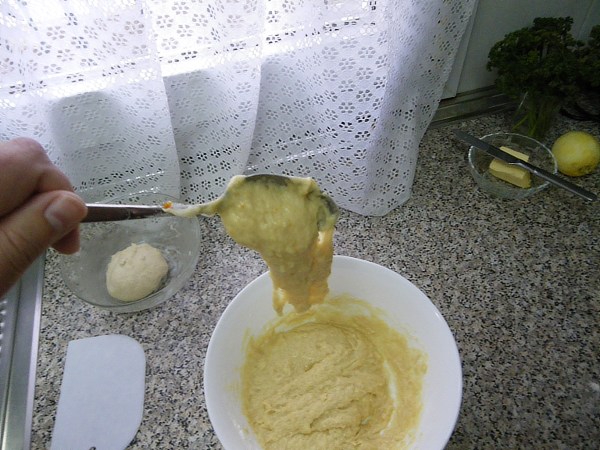
Now, you'll have to work out some way of kneading this thing. Well, you cannot really knead it. I did a kind of light French fold.
Pour the dough onto the counter, pick it with one hand and stretch it upwards, repeat for ten minutes, wait ten minutes (keep an eye on it, it could fall from your counter!), knead again for ten minutes. At first you'll think that you will never get a workable dough, but eventually things change. You'll still have a very wet dough, but now you can see a good amount of gluten strands and it looks like a dough more than a batter now.
Knead in 50 gr of soft butter, and knead again, and again, and again. The gluten develops more and more, and you'll begin to feel more confident.
Knead in the preferment, wich at this stage should have doubled, and knead again till you have a proper dough. Now you should be able to do a proper French fold.
Shape in a ball (if you can). Cover and let rest in a greased bowl until doubled.
Punch down the dough, make a few stretch and fold and let it double again.
Transfer the dough to a slightly floured surface (I like wood), poke a hole right in the centre with your finger and gently ease the dough outwards (as shown in BBA for the couronne):
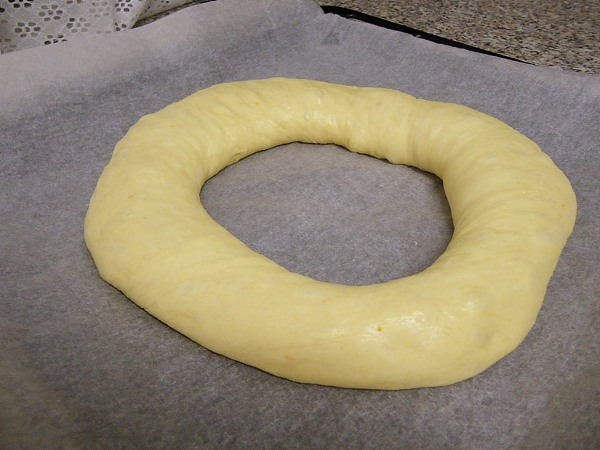
In a perfect world, the crown would be the same width all around. But this is not a perfect world.
Let it proof. You'll have to trust your experience now. If in doubt, bake it. If it's overproofed, when you take it out of the oven, it will colapse.
Paint with egg and spread a fair amount of moist sugar over the top:
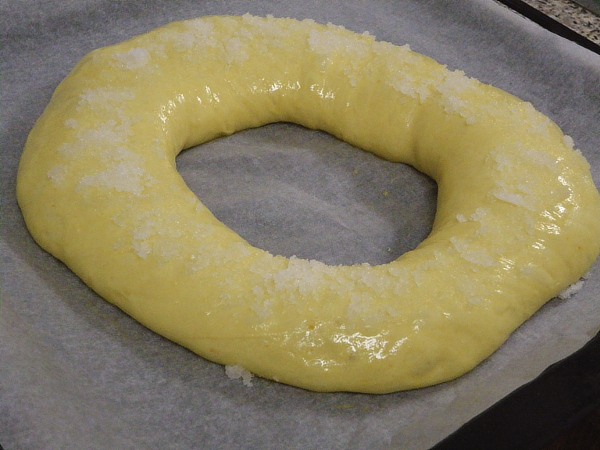
Preheat the oven to 200C or 400F. Place your dough into the oven and lower the temp to 160C or 320 F. Bake for 35 min.
The smell while it's baking is awesome.
It should be reddish brown, tender, slightly moist in the inside. The crumb is light, soft, fluffy. This size is plenty enough for four persons.
¡Buen provecho!
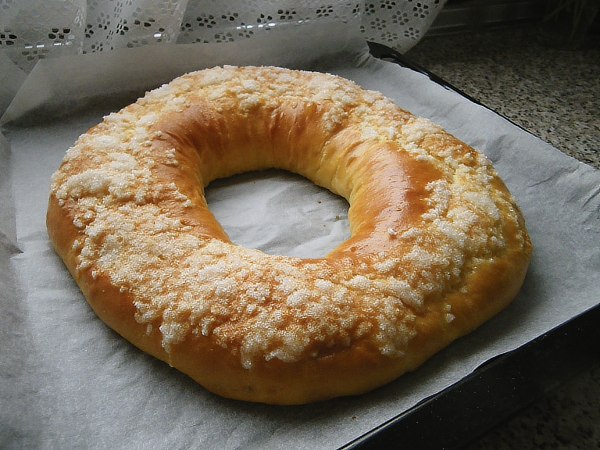
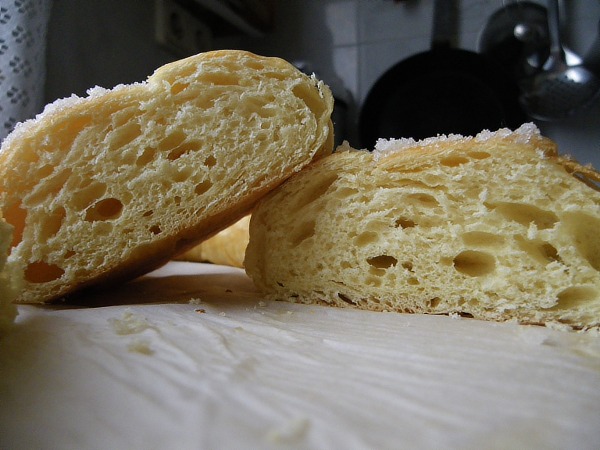
- La masa's Blog
- Log in or register to post comments
Just a minute ago I sent out e-mail invitations to a bunch of our friens to come over this Sunday for the "Galettes des rois" celebration. I'll probably make three French ones as well as a Swiss one (which is basically a sweet brioche).
Who got the crown this morning?
Hi
I'm just wondering if you have ever tried cutting the couronne before baking?
Daniel Leader illustrates this well in his "Local Breads". I think with you using an enriched dough you should have sufficient dough quality for it to expand nicely. This may help make the best use of the flow which happens as a result of the sugar in your dough.
There's a lovely looking crumb texture to it
This photo kind of shows what I mean, but it could be better.
Andy
Hi Andy,
I've never tried that. This dough is fermented to its limit, I think it would collapse if you try to cut it.
That looks lovely.
One of the first posts I made on TFL was a New Orleans-style Mardi Gras Kings' Cake, which is like a completely over-the-top cousin of this.
Yes, I've read your recipe and I think is like a cousin of mine, too.
A bombastic, eccentric and outlandish cousin :-)
I made a copy of your recipe, thank you!
Sylvia
Very nice looking bread La masa. And a nice detailed post of your methods. The crust looks wonderful.
When you say sprinkle moist sugar, what is moist sugar? I'm not familiar with this reference.
Thanks,
Eric
Could you do this with a mixer, like Jason's Ciabatta recipe?
that sure would make a great breakfast item. i have bookmarked your recipe. thanks for sharing. and thanks for the advice to persist kneading until the dough "behaves" more properly. without that bit of advice, i would have thought i did something wrong.
It's a surprising thing that, even if you end with a soft dough, it gains consistency during fermentation. I had no problem shaping the roscón, but remember to use a high gluten flour.
I suppose you could, but I don't have a mixer, so don't really know.
(oops, this was a reply to jeb)